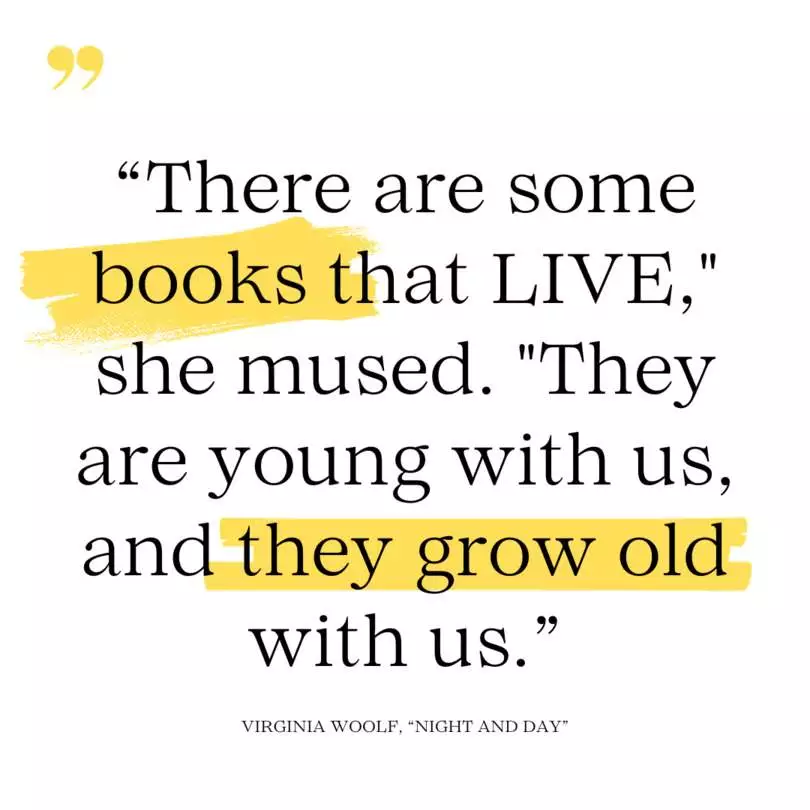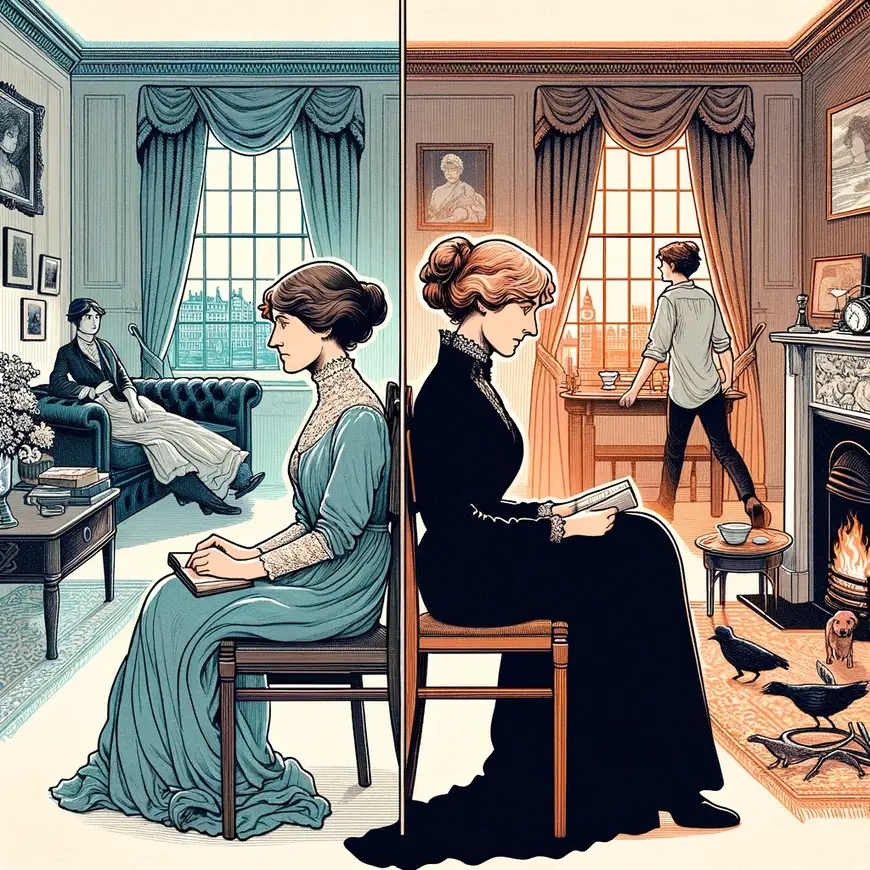Exploring the Compelling Novel of “Night and Day” by Virginia Woolf
“Night and Day” by British Author Virginia Woolf is a compelling novel that delves into the complexities of relationships, personal aspirations, and the contrasting rhythms of day and night in the lives of its characters. Set in Edwardian London, the story follows the lives of two couples, Katharine Hilbery and Ralph Denham, and Mary Datchet and William Rodney, as they navigate the intricate dance of love, work, and self-discovery.
Daylight: Love and Aspirations
The daylight world of “Night and Day” is characterized by ambition and self-discovery. Katharine Hilbery, a descendant of a distinguished literary family, grapples with her own identity and desires. Engaged to William Rodney, a conventional and persistent suitor, Katharine is torn between her familial expectations and her yearning for a deeper connection. The daylight signifies the external pressures that shape our choices and the pursuit of personal aspirations.
The night in the novel is a metaphorical realm of introspection, where characters confront their true feelings and confront their inner conflicts. Ralph Denham, a young lawyer, finds solace in the night as he grapples with his unrequited love for Katharine. Similarly, Mary Datchet, an independent suffragist, discovers the depth of her feelings for Ralph during the night. The night represents a time of reckoning with one’s emotions, unburdened by the demands of society.
Complex Relationships and The Power of Dialogue:
Woolf masterfully weaves intricate relationships throughout the novel. Katharine’s engagement to William Rodney is a manifestation of societal expectations, while her connection with Ralph Denham is based on a deeper emotional bond. The contrast between these relationships highlights the struggle between duty and true affection. Mary Datchet’s dedication to her work and her evolving relationship with Ralph also add layers of complexity to the narrative.
“Night and Day” is enriched by its dynamic dialogues that reveal the inner thoughts and conflicts of the characters. Through conversations, we gain insight into their struggles, desires, and doubts. The dialogues highlight the disparities between public facades and private emotions, capturing the nuances of human communication.
Intersection of Gender and Society:
The novel also delves into the role of gender in society. Mary Datchet’s role as a suffragist underscores the emerging feminist movement, while Katharine’s internal conflicts showcase the expectations placed on women in the early 20th century. Woolf prompts readers to consider the evolving roles and expectations of women in society, challenging traditional norms.
“Night and Day” presents parallel journeys of self-discovery for its characters. Katharine’s exploration of her own desires mirrors Ralph’s journey of understanding his emotions. Mary and William’s evolving relationship mirrors the complexities of Katharine and Ralph’s connection. These parallel journeys emphasize the universality of human emotions and experiences.
Struggle Between Art and Practicality and London as a Symbol:
Katharine’s lineage as a descendant of literary giants highlights the tension between artistic pursuits and practicality. As she grapples with her family’s legacy, Katharine must decide whether to follow her passion for art or adhere to societal conventions. This internal struggle mirrors the broader societal debate about the value of artistic pursuits in the face of practical concerns.
The city of London serves as a backdrop that reflects the characters’ internal conflicts and external dilemmas. The bustling metropolis mirrors the chaos of emotions and decisions the characters grapple with. The city’s different facets—its historical significance, modernity, and cultural diversity—add depth to the story’s setting.

Unveiling the Layers of Meaning in “Night and Day” by Virginia Woolf
“Night and Day” by Virginia Woolf, a timeless literary masterpiece, delves into the intricate tapestry of human emotions, societal expectations, and the interplay between personal desires and societal norms. This insightful interpretation examines the central theme of the novel and its profound impact on literary critics and society.
At its core, “Night and Day” explores the delicate balance between love and societal conventions. The characters, Katharine Hilbery, Ralph Denham, Mary Datchet, and William Rodney, represent various facets of this theme. Katharine grapples with the pressure to conform to her family’s legacy and her true desires. Ralph, enamored by Katharine, questions the authenticity of his emotions. Mary and William’s relationship challenges traditional gender roles. The novel’s central theme underscores the tension between following one’s heart and adhering to societal expectations.
Impact on Literary Critics and Impact on Society:
“Night and Day” garnered both praise and contemplation from literary critics. Woolf’s masterful portrayal of the characters’ internal conflicts and the intricacies of their relationships drew admiration. Critics lauded the novel’s exploration of gender roles, appreciating Woolf’s nuanced approach to depicting strong, independent female characters like Mary Datchet. The novel’s use of dialogue to reveal characters’ inner thoughts was also widely acclaimed, as it showcased Woolf’s innovative narrative style.
“Night and Day” made a lasting impact on society, particularly in its contribution to the feminist movement. Woolf’s portrayal of complex female characters challenged traditional gender norms of the time, encouraging readers to reconsider societal expectations. Mary Datchet’s role as a suffragist and her pursuit of a meaningful career resonated with women seeking greater agency and recognition. The novel’s themes of self-discovery and authenticity also encouraged individuals to question their own lives and choices, promoting a sense of introspection.
Exploration of Modernity and Tradition:
Woolf’s portrayal of Edwardian London as a backdrop for the characters’ lives speaks to the broader clash between modernity and tradition. The characters’ struggles with their own identities mirror society’s struggle to reconcile traditional values with the changing dynamics of the early 20th century. This exploration of modernity and tradition resonated with readers grappling with societal shifts and evolving worldviews.
Legacy of “Night and Day”:
“Night and Day” continues to influence literary and cultural discourse. Its exploration of the duality between personal desires and societal obligations remains relevant in contemporary discussions about individuality, identity, and societal expectations. The novel’s impact on feminist literature and its portrayal of multi-dimensional female characters have left an indelible mark on the literary landscape.

Quotes from “Night and Day” by Virginia Woolf:
- “She perceived that in wondering about Ralph, in turning her head quickly to look for him, in starting when he spoke to her, in thinking of him when she was with other people, she had embarked upon that process of concealment which is so delightful at first and becomes such a terror later.”
- “I see you now as you will be when you are old. You will be rather heavy, rather silent, you will always be dressed in purple, and you will always have a white shawl over your shoulders.”
- “There’s nothing to regret in love. It’s always worth it.”
- “Life is but a procession of shadows, and God knows why it is that we embrace them so eagerly, and see them depart with such anguish, being shadows.”
- “No human being, she thought, is ever really formed. First you become something, and then you become something else.”
- “You are more than a shadow. You are complete in yourself, alive in yourself.”
- “One has to choose between the moment and the long term.”
These quotes capture some of the novel’s key themes, including love, self-discovery, the passage of time, and the choices individuals make in the face of conflicting desires.
Trivia Facts about “Night and Day” by Virginia Woolf
- Bloomsbury Group: Virginia Woolf was a central figure in the Bloomsbury Group, an influential circle of writers, artists, and intellectuals based in the Bloomsbury district of London. Members of the group, including E.M. Forster, Lytton Strachey, and Woolf’s sister, Vanessa Bell, often discussed literature, art, and politics. The intellectual environment of Bloomsbury influenced Woolf’s writing, including “Night and Day.”
- London Setting: “Night and Day” is set in London, a city that played a significant role in Woolf’s life and work. The novel’s depiction of London life, with its detailed descriptions of the city’s streets, parks, and social settings, reflects Woolf’s intimate knowledge of the city. London served as both a backdrop and a character in many of her works, providing a rich, vibrant context for her exploration of social and personal themes.
- Literary Influence of Henry James: Virginia Woolf was influenced by the works of Henry James, an American-British author known for his psychological realism and exploration of consciousness. “Night and Day” reflects Jamesian themes of social conventions, relationships, and the inner lives of characters. Woolf admired James’s narrative techniques and his ability to delve into the complexities of human experience, which can be seen in her own literary style.
- Influence of Woolf’s Father, Leslie Stephen: Leslie Stephen, Virginia Woolf’s father, was a prominent literary figure and historian. He was the editor of the “Dictionary of National Biography” and had connections with many important writers of the time, including George Eliot and Thomas Hardy. His intellectual legacy and the literary environment in which Woolf was raised influenced her development as a writer. “Night and Day,” with its exploration of intellectual life and social conventions, reflects the impact of her father’s influence and her own engagement with the literary traditions he represented.
Conclusion: “Night and Day”
In “Night and Day,” Virginia Woolf artfully dissects the complexities of human relationships and the conflict between love and societal conventions. This interpretation highlights the novel’s profound influence on literary critics and society at large. By challenging gender norms, fostering introspection, and exploring the interplay between tradition and modernity, Woolf’s work continues to serve as a thought-provoking exploration of the human experience, resonating with readers across generations.
“Night and Day” by Virginia Woolf captivates readers with its exploration of love, self-discovery, societal expectations, and the interplay between day and night in the lives of its characters. Through its intricate relationships, powerful dialogues, and nuanced exploration of gender roles, the novel invites readers to reflect on their own journeys of self-discovery and the complexities of human connections in a changing world. Woolf’s timeless narrative continues to resonate, as it remains a poignant portrayal of the eternal dance between day and night in our own lives.
Reviews of Works by Virginia Woolf
An Ode to the Human Spirit – A Review of Virginia Woolf’s “The Waves” Woolf’s Masterpiece of Inner Worlds –…
Embarking on the Journey of Self-Discovery – A Review of “The Voyage Out” by Virginia Woolf Navigating the Seas of…
A Poetic Journey of Time and Perception – Virginia Woolf’s “To the Lighthouse” Embark on a mesmerizing voyage through the…
Orlando by Virginia Woolf: A Time-Traveling Odyssey Through Gender and Identity Quick Summary: My Thoughts on Orlando by Virginia WoolfReading…
The Labyrinth of the Human Mind: Virginia Woolf’s “Mrs. Dalloway” Virginia Woolf, an influential figure in the modernist literary movement,…




